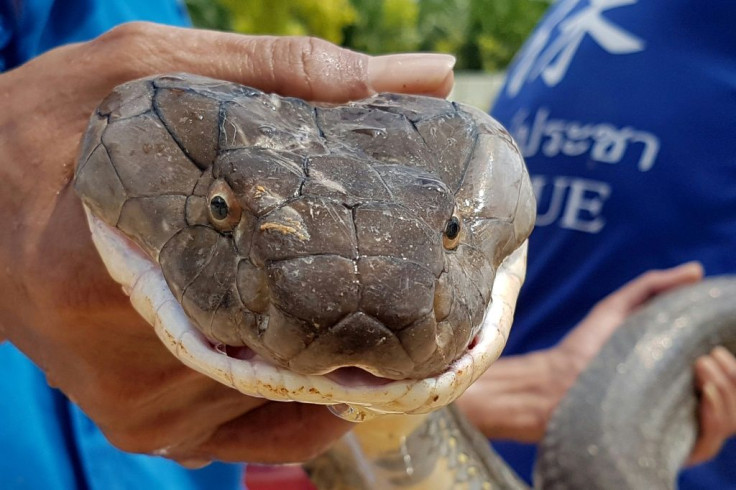Deadly Snake Eats Another Serpent; Photo Goes Viral
Social media is filled with rare and intriguing photos that often blow our minds. One such photo that has been generating quite a buzz on social media is that of a snake devouring another serpent.
The photo shared by Indian Forest Services (IFS) officer Parveen Kaswan via Twitter on Tuesday showed a king cobra eating a spectacled cobra.
"Ophiophagus hannah. A King cobra eating a spectacled cobra. They feed on lesser mortals," Kaswan captioned the picture.
"The scientific name of this king cobra is; Ophiophagus hannah. 'Ophiophagus' is derived from Greek, meaning 'snake-eating' and hannah is derived from the name of tree-dwelling nymphs in Greek mythology. So king living true to its name. The only snake which build nests," he explained in the tweet thread.
Ophiophagus hannah. A king cobra eating a spectacled cobra. They feed on lesser mortals. pic.twitter.com/LL8xzQoIww
— Parveen Kaswan, IFS (@ParveenKaswan) July 19, 2021
The officer went on to add that the majority of a king cobra’s diet consists of other snakes. Rat snakes are usually their favorite species and they tend to swallow them as it is.
The photo has since gone viral on Twitter, with people calling it a "magnificent shot." Some people also thanked the officer for sharing such an interesting fact about king cobras.
"Haven’t known snakes eat snakes… thanks for the know-how," one person wrote.
"Nature's way... No explanation needed," another user wrote.
Some netizens also questioned if the venom of the spectacled cobra can harm the king cobra.
"Sir how does King cobra overcome the venom of ordinary cobra? Doesn't it affect.. Even mongoose if bitten may die but it beautifully dodges," one user asked. There has been no response to this question yet.
The king cobra is one of the most venomous snakes in the world. It is also the longest venomous snake, reaching a maximum of 5.85 meters (19 feet). Mostly found in rain forests and plains of India, southern China and Southeast Asia, these snakes feed on other snakes, venomous and nonvenomous. They also eat lizards, eggs and small mammals.
Last year, a video of a common Krait swallowing a wolf snake went viral on social media, leaving people in awe. The video was shared on Twitter by Indian Forest Service officer Susanta Nanda.






















